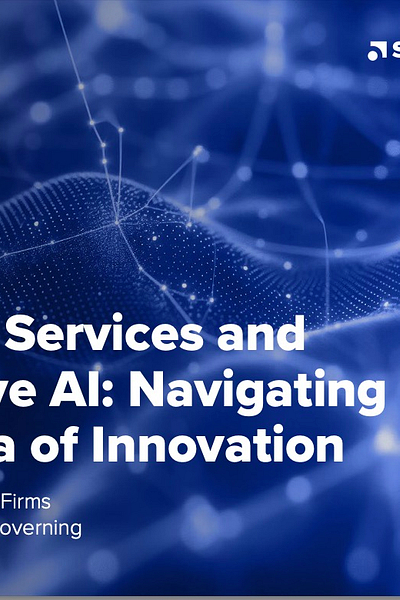Banks Must Govern AI Now, or It Will Govern Them
AI governance may stop AI from going rogue and help be prepared if it does.
This is my daily post. I write daily but send my newsletter to your email only on Sundays. Go HERE to see my past newsletters.
HAND-CURATED FOR YOU
This is a great read on how financial institutions should govern GenAI with easy-to-digest “best practices” to help hammer in the message and make it easy to digest.
This is a follow-up to yesterday’s State of AI report by McKinsey, which showed some shockingly poor figures for AI governance. HERE
You know there’s a governance problem when a survey boldly proclaims that 72% of organizations using AI report that their CEO is not responsible for overseeing AI governance and that 83% of boards do NOT oversee AI governance.
Let these statistics sink in: if the board and CEO aren’t responsible for AI, who the heck is? This naturally leads us to the first of the best practices I list below!
CEOs and boards likely want off the hook for AI, which is why so many say they don’t own it. The irony is that by denying responsibility for AI governance, they will be crucified if an AI event happens under their leadership.
CEOs and boards, be forewarned: Govern AI, or it will govern you!
👉Best Practices in AI Governance (Greatest hits)
🔹 🔥C-level executive risk-aware innovation strategy: A critical tone-from-the-top agenda item is conveying the objective of maintaining a careful balance between leveraging generative AI’s innovative potential and mitigating associated risks.🔥
🔹 Human oversight: Integrate human oversight throughout the AI lifecycle to balance automation with expert judgment.
🔹 “Trustworthy AI” framework: Adopt a framework that incorporates ethical considerations alongside technical and operational risks.
🔹 Outcome-focused use cases: Emphasize output and outcomes of generative AI use cases and not the underlying technologies.
🔹 AI with a human component intact: Leverage AI to enhance compliance with escalating regulatory demands while maintaining human oversight and accountability.
🔹 Regulatory scrutiny preparedness: Establish robust AI risk management programs in anticipation of increased regulatory scrutiny.
🔹 Shadow AI management: Implement comprehensive strategies to address unofficial AI tool usage, balancing risk mitigation with the innovation potential.
🔹 Ethical AI use guidelines: Develop and communicate clear guidelines for ethical AI use, including specific boundaries and explanations for these parameters.
🔹 Continuous due diligence: Avoid risk with applications integrating generative AI. Move beyond one-time approval processes to ongoing risk assessment.
🔹 Platform-agnostic approach: Develop performance metrics specific to intended use cases rather than defaulting to a single provider’s offerings, allowing for more tailored and cost-effective solutions.






